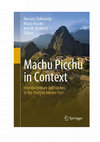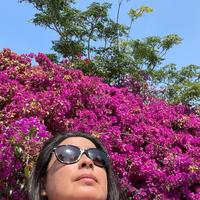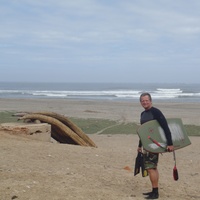Videos by Jacek Kościuk
Joya de Cerén is an ancient Maya archaeological site in El Salvador buried by an vulcanic erupt... more Joya de Cerén is an ancient Maya archaeological site in El Salvador buried by an vulcanic eruption around AD 600. It is often referred to as the "Mayan Pompeii" and since 1993 it is listed on UNESCO World Heritage List.
This video shows the resultas of 3D laser scanning done by the team of LabScan3D from Wroclaw University of Science and Technology (Bartlomiej Cmielewski &Jacek Kosciuk) in 2017 in collaboration with Francisco Gavidia University in San Slavador and The Centre of Andean Studies of University of Warsaw in Cusco. 23 views
Joya de Cerén is an ancient Maya archaeological site in El Salvador buried by an vulcanic erupt... more Joya de Cerén is an ancient Maya archaeological site in El Salvador buried by an vulcanic eruption around AD 600. It is often referred to as the "Mayan Pompeii" and since 1993 it is listed on UNESCO World Heritage List.
This video shows the resultas of 3D laser scanning done by the team of LabScan3D from Wroclaw University of Science and Technology (Bartlomiej Cmielewski &Jacek Kosciuk) in 2017 in collaboration with Francisco Gavidia University in San Slavador and The Centre of Andean Studies of University of Warsaw in Cusco. 8 views
Joya de Cerén is an ancient Maya archaeological site in El Salvador buried by an vulcanic erupt... more Joya de Cerén is an ancient Maya archaeological site in El Salvador buried by an vulcanic eruption around AD 600. It is often referred to as the "Mayan Pompeii" and since 1993 it is listed on UNESCO World Heritage List.
This video shows the resultas of 3D laser scanning done by the team of LabScan3D from Wroclaw University of Science and Technology (Bartlomiej Cmielewski &Jacek Kosciuk) in 2017 in collaboration with Francisco Gavidia University in San Slavador and The Centre of Andean Studies of University of Warsaw in Cusco. 10 views
Books by Jacek Kościuk

INVESTIGACIONES EN EL FUERTE DE SAMAIPATA, 2021
El Fuerte de Samaipata es un importante sitio arqueológico
prehispánico en Bolivia. Debido a sus ... more El Fuerte de Samaipata es un importante sitio arqueológico
prehispánico en Bolivia. Debido a sus rasgos sobresalientes, fue
inscrito en la Lista del Patrimonio Mundial de la Unesco en 1998.
Consta de un complejo administrativo-ceremonial y una roca natural
(ca. 80 por 250 m). Esta se encuentra cubierta de terrazas, plataformas,
nichos, reservorios y canales de agua, así como numerosos petroglifos
zoomorfos y geométricos esculpidos. Atestigua casi 1200 años de
actividad de diversas culturas precolombinas locales. La forma final
de la roca probablemente se remonta al siglo XV (¿segunda mitad?)
o principios del siglo XVI, cuando esta región se incorporó al Imperio
inca (Tawantinsuyu). La roca fue el tema principal del proyecto
de investigación polaco Estudio Arquitectónico y Documentación
Compleja del Sitio de Samaipata (Fuerte de Samaipata/Bolivia) de la
Lista del Patrimonio Mundial, dirigido por los profesores Jacek Kościuk
y Mariusz Ziółkowski.
El presente libro es el resultado del proyecto de investigación
patrocinado por la subvención otorgada a la Wroclaw University
of Science and Technology por el Polish National Science Centre
(subvención N.o 2014/15/B/HS2/01108). Además, el municipio de
Samaipata contribuyó con el alojamiento durante las temporadas de
trabajo de campo 2016 y 2017. La investigación se realizó en estrecha
colaboración con el Centro de Estudios Andinos de la Universidad de
Varsovia en Cusco, Perú.
This book is the second volume of a monograph series concerning early medieval Abû Mînâ. This tim... more This book is the second volume of a monograph series concerning early medieval Abû Mînâ. This time the main subject are shops and workshops of the last phase of Abû Mînâ settlement. The second volume also integrates the material dispersed in preliminary excavation reports and partial synthesis. The study includes also attempts at reconstruction and interpretation of discovered architectural relics, finds and building technology. From 1982 on, the author participates in research conducted in Abû Mînâ lead by the German Archaeological Institute in Cairo. Abû Mînâ ruins are inscribed on the UNESCO World Heritage List.
Projekt okładki, projekt typograficzny i skład książki Janusz M. Szafran
Księga jubileuszowa oferowana Profesorowi Stanisławowi Medekszy
Chapters by Jacek Kościuk

Machu Picchu in Context, 2022
Against the background of general reflections on the Inca building art research, this chapter dis... more Against the background of general reflections on the Inca building art research, this chapter discusses four specific examples of constructions in the Machupicchu complex. Separate case studies concern the Intimachay astronomical observatory, the Mirador de Inkaraqay serving the same function, the enclosure wall separating agricultural terraces from the residential area, and the building known as the Sala de los Morteros. Particular emphasis was placed on the analysis of the technique and logistics of the construction process. Based on detailed observations of masonry threads and data from 3D laser scanning, an attempt was made to isolate individual technological construction phases and determine their mutual logistic connections. In the case of Sala de los Morteros, it made it possible to estimate the number of workers directly employed in the construction of this building and the time needed to erect it. The obtained results should be treated as an introduction to further research on the planning and logistics of constructing the Llaqta of Machupicchu as an important, complex and state-run political, administrative and religious centre.

Machu Picchu in Context, 2022
Using the cosine quantogram method, the authors carry out a metrological study of Llaqta Machupic... more Using the cosine quantogram method, the authors carry out a metrological study of Llaqta Machupicchu. The introduction presents a synthetic review of the literature and emphasises the reliability of the initial data for any metrological analysis. The presented research was based on the results of the 3D laser survey. In part presenting the research methodologies and methods used, attention was drawn to the difficulties associated with the typical Inca architecture inclination of external walls and most often inaccessible for direct laser measurements level of building foundations, on which building plan might have been initially laid out. Llaqta Machupicchu metrology studies were expanded by comparative material from the Coricancha Temple in Cusco, Chachabamba archaeological site and El Fuerte de Samaipata in Bolivia. The research results indicate the existence of two separate systems of Inca measures based on different basic units. The authors also present a preliminary interpretation of the obtained results.
Machu Picchu in Context, 2022
Against the background of basic information on airborne laser scanning (ALS) use in the detection... more Against the background of basic information on airborne laser scanning (ALS) use in the detection of architectural and archaeological relics hidden under the forest cover, two cases of using LiDAR in research conducted in the Archaeological Park ofMachu Picchu are discussed. The obtained results are compared with selected examples of similar studies. Particular emphasis was placed on the potential scope of application and expected results of aeroplane-based LiDAR and UAV-based LiDAR. A potential strategy for further application of the ALS survey in the Machu Picchu Park research was also proposed.

Machu Picchu in Context, 2022
The aim of this text has been the evaluation of the hypotheses, formulated by various authors, on... more The aim of this text has been the evaluation of the hypotheses, formulated by various authors, on the possible astronomical function of seven structures and architectural ensembles located in the Llaqta of Machu Picchu and its immediate vicinity: the Temple of the Sun, the Room of the Mortars, the cave of Intimachay, the Temple of Condor, the Intihuatana, the Mirador de Inkaraqay, the River Intihuatana as well as the site of Llactapata. Apart from the Room of the Mortars, whose astronomical function was revealed to be dubious, the remaining six ensembles present well-documented evidence of astronomical alignments, with a marked preference for orientations towards sunrise on the June Solstice, and the demarcation of a fixed number of days around this phenomenon. Two structures, namely Intimachay and the Mirador de Inkaraqay, meet instrument requirements for precision observations, but of different types. The latter structure, provided with two observation tubes, a unique case in Inca architecture, seems to have been designed for observations of the Pleiades and Venus at its maximum elongation, in the frame of a multiannual cycle. Intimachay, on the other hand, was used for observations of the cycles of the Sun and the Moon.
Investigaciones en el Fuerte de Samaipata, Jacek Kościuk, Mariusz Ziółkowski, Sonia Alconini (eds.), 2021
Investigaciones en el Fuerte de Samaipata, Jacek Kościuk, Mariusz Ziółkowski, Sonia Alconini (eds.), 2021
Investigaciones en el Fuerte de Samaipata, Jacek Kościuk, Mariusz Ziółkowski, Sonia Alconini (eds.), 2021
Investigaciones en el Fuerte de Samaipata, Jacek Kościuk, Mariusz Ziółkowski, Sonia Alconini (eds.), 2021
Investigaciones en el Fuerte de Samaipata, Jacek Kościuk, Mariusz Ziółkowski, Sonia Alconini (eds.), 2021
Investigaciones en el Fuerte de Samaipata, Jacek Kościuk, Mariusz Ziółkowski, Sonia Alconini (eds.), 2021
Los autores desean agradecer a la Wroclaw University of Science and Technology Publishing House p... more Los autores desean agradecer a la Wroclaw University of Science and Technology Publishing House por el permiso para usar estos materiales.
Investigaciones en el Fuerte de Samaipata, Jacek Kościuk, Mariusz Ziółkowski, Sonia Alconini (eds.), 2021
Investigaciones en el Fuerte de Samaipata, Jacek Kościuk, Mariusz Ziółkowski, Sonia Alconini (eds.), 2021
Investigaciones en el Fuerte de Samaipata, Jacek Kościuk, Mariusz Ziółkowski, Sonia Alconini (eds.), 2021










Uploads
Videos by Jacek Kościuk
This video shows the resultas of 3D laser scanning done by the team of LabScan3D from Wroclaw University of Science and Technology (Bartlomiej Cmielewski &Jacek Kosciuk) in 2017 in collaboration with Francisco Gavidia University in San Slavador and The Centre of Andean Studies of University of Warsaw in Cusco.
This video shows the resultas of 3D laser scanning done by the team of LabScan3D from Wroclaw University of Science and Technology (Bartlomiej Cmielewski &Jacek Kosciuk) in 2017 in collaboration with Francisco Gavidia University in San Slavador and The Centre of Andean Studies of University of Warsaw in Cusco.
This video shows the resultas of 3D laser scanning done by the team of LabScan3D from Wroclaw University of Science and Technology (Bartlomiej Cmielewski &Jacek Kosciuk) in 2017 in collaboration with Francisco Gavidia University in San Slavador and The Centre of Andean Studies of University of Warsaw in Cusco.
Books by Jacek Kościuk
prehispánico en Bolivia. Debido a sus rasgos sobresalientes, fue
inscrito en la Lista del Patrimonio Mundial de la Unesco en 1998.
Consta de un complejo administrativo-ceremonial y una roca natural
(ca. 80 por 250 m). Esta se encuentra cubierta de terrazas, plataformas,
nichos, reservorios y canales de agua, así como numerosos petroglifos
zoomorfos y geométricos esculpidos. Atestigua casi 1200 años de
actividad de diversas culturas precolombinas locales. La forma final
de la roca probablemente se remonta al siglo XV (¿segunda mitad?)
o principios del siglo XVI, cuando esta región se incorporó al Imperio
inca (Tawantinsuyu). La roca fue el tema principal del proyecto
de investigación polaco Estudio Arquitectónico y Documentación
Compleja del Sitio de Samaipata (Fuerte de Samaipata/Bolivia) de la
Lista del Patrimonio Mundial, dirigido por los profesores Jacek Kościuk
y Mariusz Ziółkowski.
El presente libro es el resultado del proyecto de investigación
patrocinado por la subvención otorgada a la Wroclaw University
of Science and Technology por el Polish National Science Centre
(subvención N.o 2014/15/B/HS2/01108). Además, el municipio de
Samaipata contribuyó con el alojamiento durante las temporadas de
trabajo de campo 2016 y 2017. La investigación se realizó en estrecha
colaboración con el Centro de Estudios Andinos de la Universidad de
Varsovia en Cusco, Perú.
Chapters by Jacek Kościuk
This video shows the resultas of 3D laser scanning done by the team of LabScan3D from Wroclaw University of Science and Technology (Bartlomiej Cmielewski &Jacek Kosciuk) in 2017 in collaboration with Francisco Gavidia University in San Slavador and The Centre of Andean Studies of University of Warsaw in Cusco.
This video shows the resultas of 3D laser scanning done by the team of LabScan3D from Wroclaw University of Science and Technology (Bartlomiej Cmielewski &Jacek Kosciuk) in 2017 in collaboration with Francisco Gavidia University in San Slavador and The Centre of Andean Studies of University of Warsaw in Cusco.
This video shows the resultas of 3D laser scanning done by the team of LabScan3D from Wroclaw University of Science and Technology (Bartlomiej Cmielewski &Jacek Kosciuk) in 2017 in collaboration with Francisco Gavidia University in San Slavador and The Centre of Andean Studies of University of Warsaw in Cusco.
prehispánico en Bolivia. Debido a sus rasgos sobresalientes, fue
inscrito en la Lista del Patrimonio Mundial de la Unesco en 1998.
Consta de un complejo administrativo-ceremonial y una roca natural
(ca. 80 por 250 m). Esta se encuentra cubierta de terrazas, plataformas,
nichos, reservorios y canales de agua, así como numerosos petroglifos
zoomorfos y geométricos esculpidos. Atestigua casi 1200 años de
actividad de diversas culturas precolombinas locales. La forma final
de la roca probablemente se remonta al siglo XV (¿segunda mitad?)
o principios del siglo XVI, cuando esta región se incorporó al Imperio
inca (Tawantinsuyu). La roca fue el tema principal del proyecto
de investigación polaco Estudio Arquitectónico y Documentación
Compleja del Sitio de Samaipata (Fuerte de Samaipata/Bolivia) de la
Lista del Patrimonio Mundial, dirigido por los profesores Jacek Kościuk
y Mariusz Ziółkowski.
El presente libro es el resultado del proyecto de investigación
patrocinado por la subvención otorgada a la Wroclaw University
of Science and Technology por el Polish National Science Centre
(subvención N.o 2014/15/B/HS2/01108). Además, el municipio de
Samaipata contribuyó con el alojamiento durante las temporadas de
trabajo de campo 2016 y 2017. La investigación se realizó en estrecha
colaboración con el Centro de Estudios Andinos de la Universidad de
Varsovia en Cusco, Perú.
using satellite imagery. Our results point to rainwater infiltration as the most significant source of risk for La Fortaleza’s perimeter walls. Combined with other adverse natural conditions and contemporary conservation interventions, this led to the 2022 collapse. Specialists need to consider these factors when tasked with conserving monuments located in comparable high-altitude perhumid environments. This integration of analytical results demonstrates how multi-scalar and multiinstrumental approaches provide comprehensive and timely assessments of conservation needs.
rainforest, it is challenging to detect traces of anthropogenic structures. A method that could help is the light detection and ranging (LiDAR) survey from airplanes or helicopters. The authors propose an alternative method using a self-developed LiDAR
system mounted on a drone platform, able to detect even relicts of walls less than one meter high. This approach’s main advantages are the speed and flexibility of prospection, high-resolution 3D point clouds, and the ability to penetrate the rainforest. The authors discussed data collecting methods, filtration, classification, and different visualization algorithms in the first part of the paper. The second part presents the preliminary results of the LiDAR survey over Chachabamba and Inkaraqay sites, the first validation of the outcomes, and general conclusions on UAV LiDAR feasibility in Peruvian rainforest conditions.
examination and complex documentation of Samaipata (Fuerte de Samaipata/Bolivia)”. The study involved the following three steps: 1) Searching for visualisation methods that would allow the original form of today’s indecipherable petroglyphs to be identified; 2) Identifying the original iconographic program of individual engravings; 3) Searching for possible stylistic and formal analogies in order to fit the iconographic program into the broader context of rock art in this part of South America. Due to the amount of material available and its multi-threaded nature, the study does not exhaust the topic, but only, based on some of the most
characteristic examples, shows the methodological and methodical aspects of studying such petroglyphs.
ILCE-7RM2, Parrot Sequoia, and Flir Tau2 cameras were used. The authors obtained over 50 thousand images and over 27 thousand multispectral images (multiplied by four bands, which gave over 100 thousand single band images). The multispectral and thermal data enabled risk maps to be created for conservation purposes.
Jacek Kościuk, Mariusz Ziółkowski, Bartłomiej Ćmielewski, MULTIDISCIPLINARY DOCUMENTATION OF FUERTE DE SAMAIPATA, Institute of Andean Studies 58th Annual Meeting, January 5-6, 2018, Berkeley, California
The main part of the site is a natural rock (ca. 215 x 70 meters) covered with the complicated layout of petroglyphs. Due to the fast erosion of the rock, some of the petroglyphs become illegible. The main aim of our project is to document all that is still visible by 3D laser scanning, structured light scanning, digital photogrammetry, multispectral and infrared imaging. More than 30 new, unknown petroglyphs were detected and several illegible reinterpreted.
All the data will be integrated on GIS platform including ‘risk map’ for restoration purposes.
The project is sponsored by the National Science Centre Poland with the grant 014/15/B/HS2/01108.
The first case is an evaluation of hypotheses regarding the possible astronomical function of this temple. Among them, of particular importance is the one formulated by Zuidema and Aveni, according to which astronomical observations at the Coricancha constituted the structural skeleton of a specific Inca calendar cycle of 328 days. This article presents a critical analysis of this hypothesis, based on long-term research and precise measurements carried out by the authors of the text.
The second case, based on the same 3D laser scanning data, is a preliminary study on the Coricancha’s metrology. The overall dimensions of the whole temple and particular buildings are discussed, as well as the results of the first studies on measuring units that were possibly used by Inca engineers when designing the whole complex.
The third case discussed in this paper is a feasibility study of the possible impact of mobile LIDAR scanning in regards to Cusco urbanism. A sample of data collected in September 2018 will be presented.
Jacek Kościuk, Bartłomiej Ćmielewski, BADANIA ARCHITEKTONICZNE I KOMPLEKSOWA DOKUMENTACJA ZESPOŁU SZTUKI NASKALNEJ Z LISTY ŚWIATOWEGO DZIEDZICTWA - FUERTE DE SAMAIPATA (BOLIWIA), Sztuka Naskalna, III Ogólnopolska Konferencja, 23-24.11.2017, Kraków
Jego najważniejszą część stanowi naturalna skała (ca. 215 x 70 m) pokryta skomplikowanym układem petroglifów przedstawiających zwierzęta, różne formy geometryczne, kanały, zbiorniki na wodę, a także tarasy i nisze. Mimo dominującego inkaskiego charakteru, początki stanowiska sięgają zapewne ok. 300 r. n.e.
Szybko postępujący proces erozji macierzystej skały sprawia, że poszczególne przedstawienia sztuki naskalnej stają się coraz mniej czytelne, a niektóre są już nierozpoznawalne. Projekt rozpoczęty w 2016 roku ma na celu szczegółową dokumentację całej skały za pomocą najbardziej aktualnych metod.
Wykonano laserowe skanowanie 3D oraz cyfrową fotogrametrię całej skały w świetle widzialnym, kamerą multispektralną oraz podczerwoną. Dodatkowo, skanerem światła strukturalnego, oraz metodą wysokorozdzielczej fotogrametrii cyfrowej bliskiego zasięgu, szczegółowo zinwentaryzowano najważniejsze petroglify. Analiza zebranego materiału pozwoliła przede wszystkim zarchiwizować dla potomności ginące petroglify. Zidentyfikowano także ponad 30 dotychczas nieznanych petroglifów, a także zreinterpretowano kilka zupełnie zatartych.
Przebadano także próbki skały pod kątem petrograficznym i mineralogicznym oraz wykonano badania lichenologiczne porostów atakujących skałę.
Całość zebranych danych zostanie zintegrowana na platformie GIS wraz z opracowywaną dla celów konserwatorskich ‘mapą ryzyka’.
Projekt finansowany jest z grantu NCN 014/15/B/HS2/01108 w konkursie OPUS 8
The place on the World Heritage List - season 2016. PowerPoint presentation